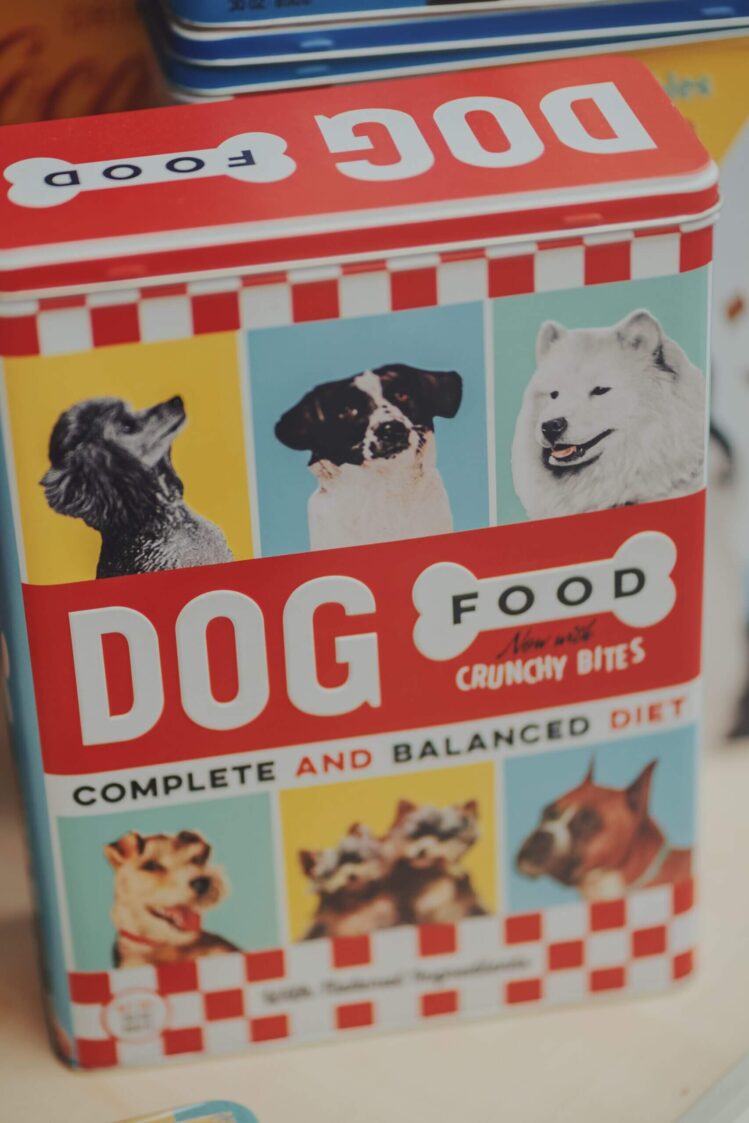
RAW DOG FOOD AND WHAT YOU SHOULD KNOW
HOMEMADE RAW DOG FOOD
There are many differing opinions of feeding dogs raw dog food. The process of homemade raw dog food can be confusing and you should be aware that there are risks involved. When done correctly though, raw dog food recipes can be healthy and beneficial.
KEEP AN OPEN MIND WITH RAW DOG FOOD RECIPES
A lot has been written about raw dog food feeding. Much of it is based on the way ancestors of dogs survived in the wild. Contrary to veterinarian’s opposition to raw feeding, recent studies found a number of benefits this diet provides to dogs. But be aware that just like any other type of food, raw feeding still has its negatives.
Homemade meals will, of course, take more time to prepare than commercial off the shelf dog food. Whether it’s raw food or cooked recipes they can also be more costly, especially if shopping for fresh meat. Also, remember because we’re dealing with raw meat, bacterial contamination is a big concern if it’s not done correctly.
For the beginner, raw feeding is exactly what it sounds like: a diet that consists of uncooked and unprocessed ingredients. Because the foods are raw and haven’t been tampered with they will retain all their natural wholesomeness without any by-products, artificial preservatives or food colors, and no filler.
Ingredients in raw dog food recipes most commonly include the meat of different types ( muscle and organs ) and eggs. Other recipes will also include seeds, nuts, grains, fresh vegetables, fresh fruits, dried fruits ( with no additives ), and some other foods.
Now let’s take a deeper look at trying these best raw dog food recipes for your pet. We want to look at the pros and cons of preparing raw dog food meals. There are many recipes out there, but not all of them are safe or appropriate for all dogs.
SOME POSSIBLE PROBLEMS WITH RAW FOOD FEEDING
While we are seeing many dog owners having positive health effects from raw feeding of their pets, there are about just as many people who dislike this diet and after trying it went back to commercial dog foods, or simply cooking homemade dog food meals that aren’t raw. Here are some reasons:
- Raw feeding can be time-consuming. What raw food recipes you decide to use, it will never match the convenience of dry dog kibble. Dry food is simply easier to use. That’s why people love it – you buy it and you pour it into your dog’s food bowl. For many busy dog owners, preparing homemade meals is just too much hassle.
- It can be more expensive. Preparing raw dog food is most of the time more expensive than buying commercial dog food brands. It will depend entirely on what ingredients you are using, of course, but assuming you are feeding your dog with high quality and diverse foods, it will usually cost you more, and there is no way around it.
- You will determine the quality of the food. Many dog owners fail to make properly nutritious homemade raw dog food meals for their pets. This is often because they are misinformed or mislead by websites and so-called “dog food specialists” that don’t know what they are talking about. This could be a very dangerous practice.
A few years ago the Journal of the American Veterinary Medical Association ( JAVMA ) examined 200 homemade dog food recipes from websites and veterinarians alike. Of the 200 recipes, only 9 matched the NRC’s requirements for high-quality dog food. You can find most of their studies online in the AVMA library. Here’s a 2013 Stockman et al, study, and here’s a 2012 Larsen et al. study. Many problems with nutritional adequacy were detected, and the use of the recipes could result in highly variable and often inappropriate diets.
Many recipes would not meet the nutritional and clinical needs of individual patients and should be used cautiously for long-term feeding. The general consensus among veterinarians is that they are usually not supportive of the raw feeding of dogs, mainly because they do not trust pet owners to make the right choices.
THE CONTAMINATION OF BACTERIA
Dogs are much more resistant to things like Salmonella and E. coli germs than we are and bacterial contamination is rare among dogs. Still, it should be known that it’s a risk with using raw dog food recipes and caution should always be used. But if you know the source of your meats, and buy USDA certified organic and prepare it correctly, the chances of contamination are very slim.
SOME MORE THINGS TO CONSIDER
There are many more aspects of raw dog food and homemade dog food recipes in general that you’ll need to take into account. If you’ve decided to feed your dog with homemade raw food, make sure you educate yourself about all the specifics this will include – vitamins, minerals, calcium, etc. Also, make sure you consult with more than one veterinarian once you’ve chosen a particular diet.
THE RAW DOG FOOD DIET DONE THE RIGHT WAY
Yes, drawbacks do exist, like with any other diet, if you do it the right way, you and your dog can happily enjoy the benefits of feeding raw dog food. Some of the benefits are:
- A stronger immune system
- Better overall health
- Better skin and coat
- More muscle mass
- More energy
- Better digestion and better long-term health of the digestive and urinal tracts
So how do I do it? Below will be a list of seven of the best raw dog food recipes based on what your dog requires in his diet. But you shouldn’t simply follow the recipes; you need to clearly understand what goes into the making of safe homemade raw dog food for your dog.
When possible, which – when it comes to raw feeding – isn’t always the case, try to work with your veterinarian or if available a canine nutritionist to find out your dog’s exact nutritional needs and adjust the diet based on that. Your dog’s requirements will vary depending on his age, weight, breed, activity level, and overall health condition.
TO KNOW AND REMEMBER
- The importance of Calcium. One of the main problems of some bad raw dog food recipes is their lack of calcium. Many dog owners are afraid to include bones in their dog’s food, but bones are essential for the calcium and other minerals that they have. Proper raw dog food includes between 12% and 15% bone. This means that about a third of the food must include nice, meaty bones. These can be chicken wings, necks, legs or thighs, turkey necks, lamb necks or ribs, beef tail bones, and others.
- The Organs are important. Just because we have stopped eating organ meat, that doesn’t mean that your dog has to also. Organs such as livers, kidneys, lungs, hearts, brains, etc., are the most nutrient-rich parts of the animal. If you skip on the organs than you either have to include a lot of artificial supplements ( at which point you’re missing the goal of a raw food diet ) or you’ll leave your dog malnourished. The right kind of raw dog food diet includes anywhere between 10% and 30% organs. Liver is usually the easiest one to find. However, if the only organ you’re going to include in your dog’s diet is liver, then don’t make it more than 10% of the food because then you can overdose your dog on some vitamins like vitamin A. Only go above 10% of organ meat if you’re using liver with other organs.
3. Muscle meat is the basis of a Raw Dog Food Diet. Muscle meat should make up 35% to 50% of your dog’s raw dog food meal ( depending on how much organ meat you’re using ). Muscle meat is the key source of protein, as well as vitamins and enzymes. Proper raw dog food recipes must include one of the following:
- Beef ( ground, cheek, stewing )
- Beef heart ( but not more than 5% of the diet, since it’s very rich )
- Bison ( ground or stewing )
- Lamb ( stewing, ground, shoulder or breast )
- Pork ( Cushing boneless rib, loin, shoulder or rump )
- Chicken ( breasts or boneless thighs )
- Turkey ( ground, boneless thighs, breast or tenderloin )
4. Fat is important ( but accuracy is crucial ) Fat is another place where many homemade raw dog food recipes fail – some owners use too much fat in their dogs’ diets, while others skip on it entirely. Remember that dietary fat is not what makes your dog gain weight; it’s the over-consumption of calories.
Fat in itself is as important as protein in the dog’s diet; you just don’t need as much of it. Generally, the fat in your dog’s food shouldn’t go above 10%.
5. Veggies and fruit are fine when done in small amounts. Some people find it surprising, but dogs aren’t actually obligatory carnivores – they are omnivorous. Even in the wild, canines don’t just eat meat and will munch on things like berries. Being a long lost relative of bears with a close DNA sequence, it’s not surprising.
Fruits and veggies provide vitamins, minerals, prebiotics, chlorophyll, flavonoids, carotenoids, fibers, and more. This doesn’t mean that they should be the main part of your dog’s diet. Muscle meat, meaty bones, organs, and a bit of fat are what’s essential. Fruits and veggies are welcomed but use moderation.
6. Grains should be limited. Raw dog food proponents do not believe that most grains and foods like peas and potatoes should be welcomed in your dog’s diet. While dogs can digest them, they don’t bring anything nutritionally to your dog’s diet that would warrant their inclusion. Most training dog treats do include a small number of grains and that’s fine, but you really don’t need to include them in your dog’s raw food meals.
7. Over time a variety can be good. As with all other things in life, variety, and long-term balance can be good, but it depends. Most often dogs don’t require as much variety in their diet as humans do; they can eat the same food that they really enjoy for very long periods of time.
If your raw dog food recipes are complete and nutritionally balanced, and your dog loves them, then you can stick to just one. But it’s best to work with a veterinarian or canine nutritionist on this and decide whether you’ll need to switch it up now and then.
